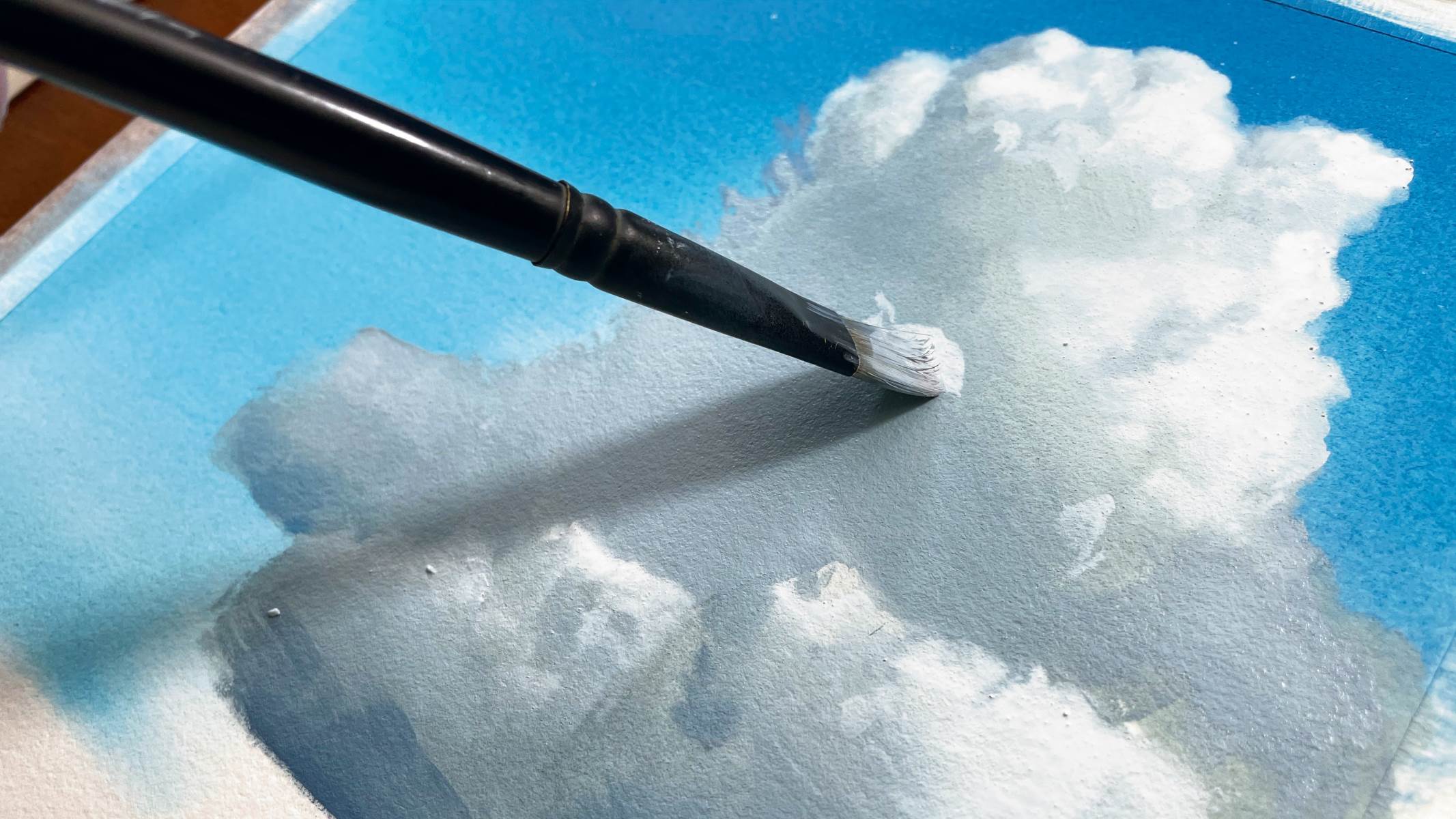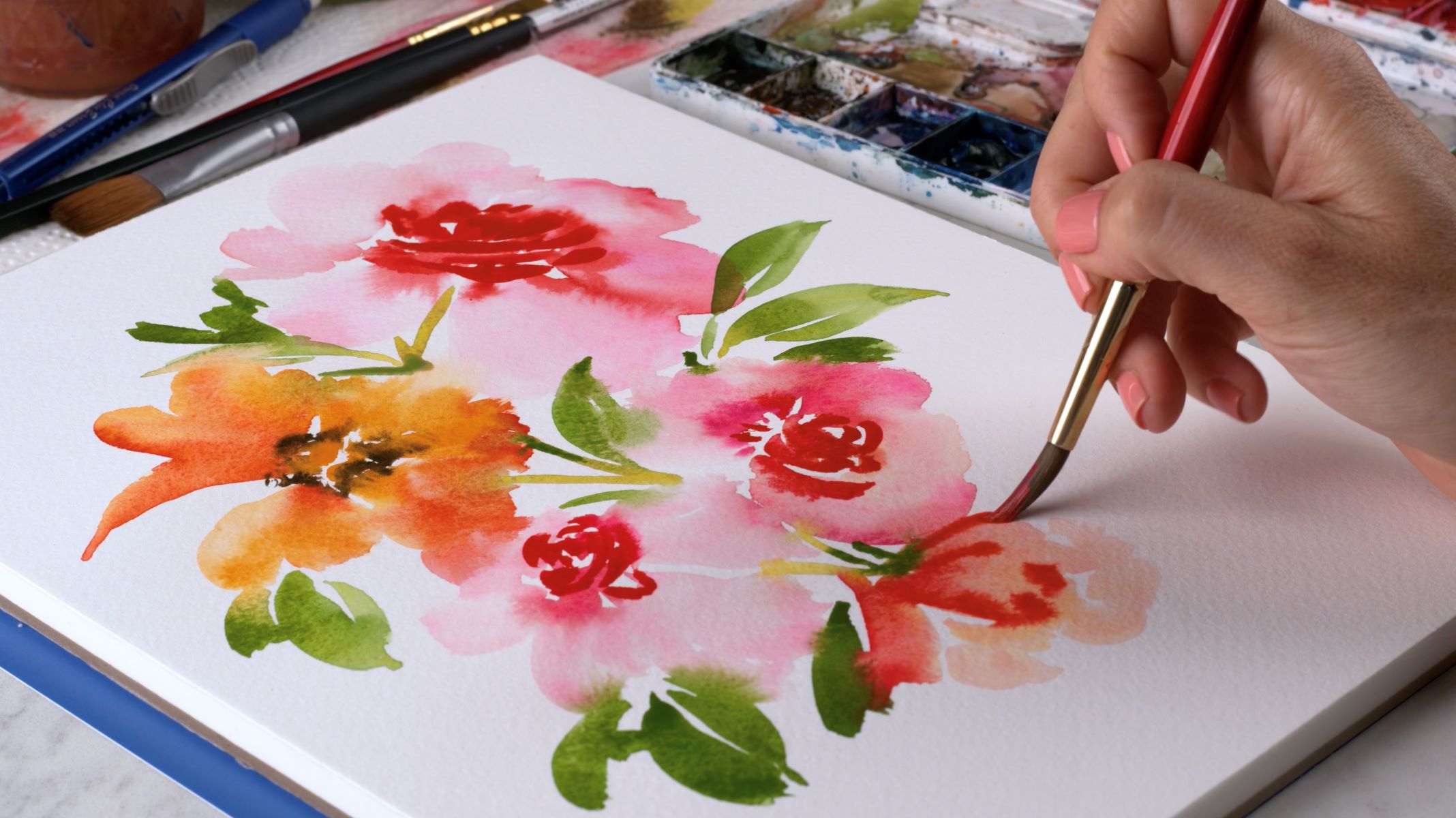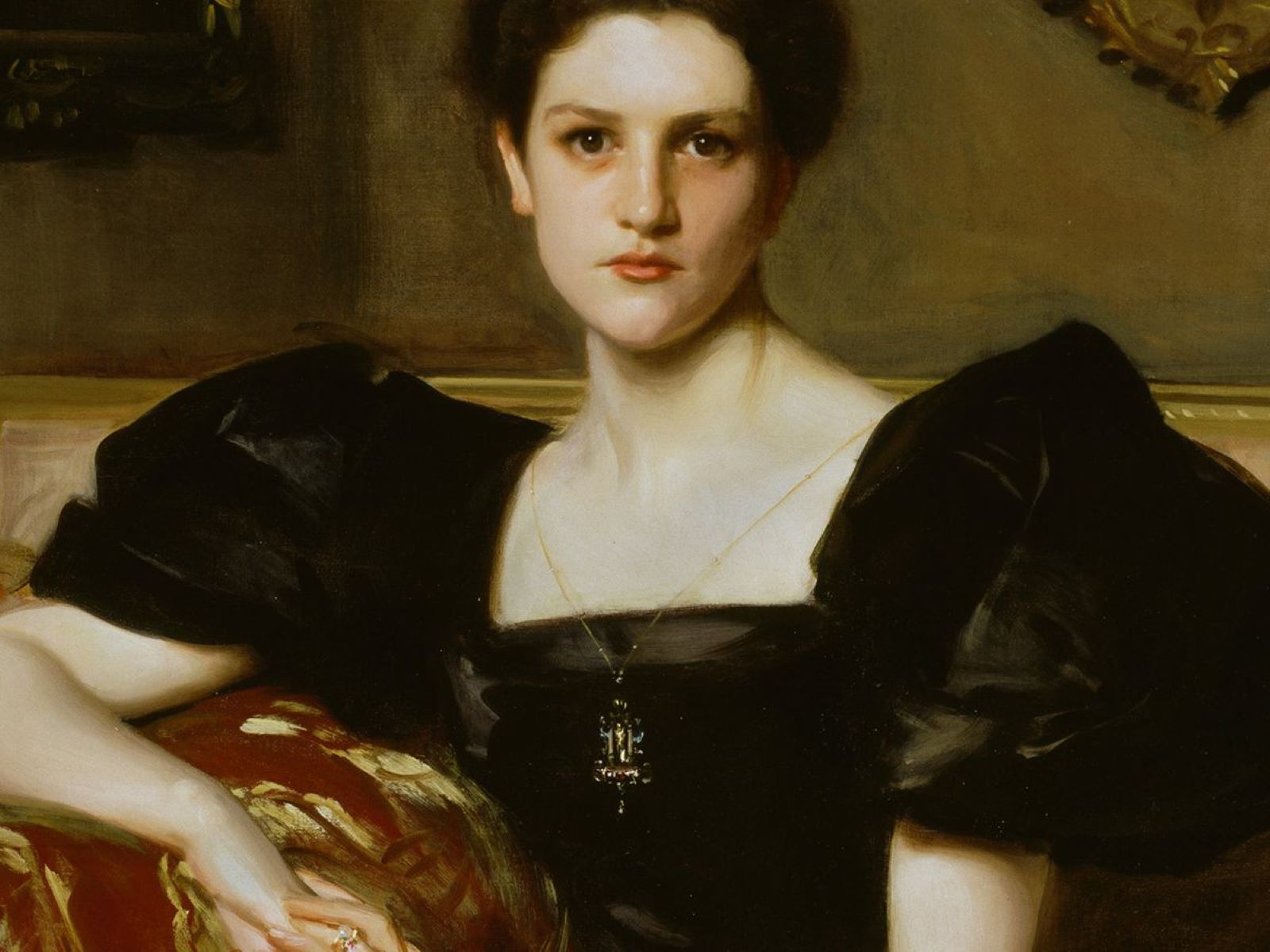Home>Arts and Culture>How To Paint Clouds


Arts and Culture
How To Paint Clouds
Published: February 28, 2024
Learn how to paint realistic clouds with our step-by-step guide. Explore the art of creating stunning cloudscapes in this arts and culture tutorial.
(Many of the links in this article redirect to a specific reviewed product. Your purchase of these products through affiliate links helps to generate commission for Regretless.com, at no extra cost. Learn more)
Table of Contents
Introduction
Painting clouds can be a mesmerizing and rewarding experience for artists of all levels. The ethereal beauty of clouds, with their ever-changing shapes and colors, offers a captivating subject for artistic expression. Whether you are a seasoned painter or just starting out on your artistic journey, mastering the art of painting clouds can elevate your skills and bring a sense of tranquility to your work.
Capturing the essence of clouds on canvas requires more than just technical skill; it demands a keen understanding of light, shadow, and atmosphere. By learning the techniques for painting realistic clouds, you can imbue your artwork with a sense of depth and movement, creating a truly immersive visual experience for the viewer.
In this comprehensive guide, we will delve into the art of painting clouds, exploring the materials needed, the selection of paint colors, and the various techniques to achieve realistic and dynamic cloudscapes. Whether you prefer the soft, billowing forms of cumulus clouds or the wispy, delicate textures of cirrus clouds, this guide will equip you with the knowledge and skills to bring these natural wonders to life on your canvas.
So, grab your brushes, prepare your palette, and let's embark on a creative journey to master the art of painting clouds. Whether you seek to add a touch of drama to a landscape or create a standalone masterpiece, the techniques and insights shared in this guide will empower you to infuse your artwork with the awe-inspiring beauty of the sky.
Read more: How To Paint Flowers
Materials Needed
When embarking on a painting journey to capture the allure of clouds, having the right materials at your disposal is essential to bring your vision to life. Here's a comprehensive list of the materials you'll need to create stunning cloudscapes on canvas:
-
Canvas or Painting Surface: Select a high-quality canvas or painting surface that suits your preferred size and dimension for the artwork. A stretched canvas provides a sturdy foundation for your painting, while canvas boards offer a portable and convenient option for creating cloud studies.
-
Paint Brushes: Invest in a variety of paint brushes, including soft bristle brushes for blending and creating soft edges, as well as round and filbert brushes for adding intricate details to your clouds. Different brush sizes and shapes will enable you to achieve a range of textures and effects in your cloud paintings.
-
Paints: Acrylic and oil paints are popular choices for painting clouds due to their versatility and ability to blend seamlessly. Opt for a selection of primary colors, along with white and various shades of blue, to capture the nuanced hues of the sky. Consider using specialty paints such as iridescent or metallic colors to add a touch of luminosity to your cloud formations.
-
Palette Knives: Palette knives are invaluable tools for creating expressive and textured cloudscapes. They allow you to apply paint in thick impasto layers, sculpting the shapes and contours of clouds with dynamic, three-dimensional effects.
-
Palette: A spacious and easy-to-clean palette is essential for mixing and blending your paint colors. Choose a palette with ample mixing areas to experiment with creating custom shades and gradients for your cloud compositions.
-
Easel: A sturdy easel provides a comfortable and adjustable platform for painting, allowing you to work at an optimal angle and height. Whether you prefer a tabletop easel for convenience or a full-size studio easel for larger artworks, the right easel can enhance your painting experience.
-
Mediums and Solvents: Depending on your chosen paint type, consider incorporating mediums such as acrylic glazing liquid or linseed oil to modify the consistency and drying time of your paints. Additionally, have appropriate solvents on hand for cleaning your brushes and maintaining the integrity of your painting materials.
-
Reference Materials: Gather visual references of clouds, whether through photographs, sketches, or observing the sky firsthand. Studying the diverse forms and patterns of clouds will enrich your understanding of their visual characteristics and aid in creating authentic and compelling cloudscapes.
By assembling these essential materials, you'll be well-equipped to embark on your cloud painting endeavors, ready to explore the techniques and nuances of capturing the ephemeral beauty of the sky on canvas.
Choosing the Right Paint Colors
Selecting the right paint colors is a pivotal step in portraying the atmospheric drama and visual poetry of clouds on canvas. Clouds are not simply white; they are a symphony of colors influenced by the interplay of light, moisture, and the surrounding sky. To authentically capture the essence of clouds, it's essential to embrace a diverse palette of hues and tones. Here's a detailed exploration of the key considerations when choosing paint colors for your cloud paintings:
Embracing the Nuances of White
While white paint forms the foundation of cloud representations, it's crucial to recognize that pure white alone cannot convey the depth and dimension of clouds. Incorporating subtle variations of white, such as titanium white, zinc white, and mixing white, allows for the portrayal of highlights, shadows, and the translucency of clouds. Experimenting with warm and cool undertones within white hues enables the depiction of the ever-changing light and atmospheric conditions that influence cloud formations.
Infusing the Sky with Blues
The sky serves as the backdrop for clouds, and capturing the myriad shades of blue is essential for conveying the mood and atmosphere of a scene. From cerulean and cobalt to ultramarine and phthalo blue, the spectrum of blue hues offers a rich tapestry for depicting the sky's expanse. By blending and layering various blue tones, artists can evoke the shifting hues of the sky at different times of day, from the soft pastels of dawn to the deep, intense blues of twilight.
Read more: How To Make Hot Pink With Paint
Introducing Subtle Undertones
Incorporating subtle undertones into cloud colors adds complexity and visual interest to the painting. Soft grays, pale lavenders, and delicate pinks can infuse clouds with a sense of warmth and luminosity, reflecting the interplay of light and moisture within the atmosphere. These understated hues contribute to the ethereal quality of clouds, allowing artists to evoke a sense of wonder and serenity in their compositions.
Harnessing the Power of Contrast
Contrast plays a pivotal role in defining the structure and form of clouds. By juxtaposing light and dark tones, artists can create dynamic and compelling cloudscapes. Utilizing deep indigos and rich purples for shadowed areas, alongside bright, airy whites for highlights, accentuates the three-dimensional nature of clouds, imbuing them with a sense of volume and presence.
Capturing the Essence of Sunset and Sunrise
For artists seeking to portray the breathtaking beauty of sunrise and sunset, incorporating warm, golden tones and hints of vermilion and rose can evoke the celestial spectacle of these fleeting moments. These vibrant hues, when delicately blended with the cool blues of the sky, allow for the creation of captivating cloud formations suffused with the radiant glow of daybreak and dusk.
In essence, the art of choosing the right paint colors for cloud painting involves embracing a diverse and nuanced palette, allowing for the portrayal of the ever-changing beauty and drama of the sky. By skillfully blending and harmonizing a range of colors, artists can breathe life into their cloudscapes, capturing the awe-inspiring essence of these celestial wonders on canvas.
Techniques for Painting Realistic Clouds
Capturing the ethereal beauty and dynamic presence of clouds on canvas requires a nuanced approach and a mastery of various painting techniques. Whether aiming to depict the billowing grandeur of cumulus clouds or the delicate wisps of cirrus formations, artists can employ a range of methods to achieve realistic and evocative cloudscapes. Here, we explore the essential techniques for painting clouds with depth, dimension, and a sense of atmospheric authenticity.
Read more: How To Get Paint Off Of Vinyl Floor
1. Blending and Layering
Achieving the soft, seamless transitions of light and shadow within clouds necessitates adept blending and layering techniques. By using soft-bristled brushes and a gentle touch, artists can gradually build up layers of paint, seamlessly merging hues to emulate the subtle gradients and textures present in clouds. Employing a combination of dry brushing and glazing techniques allows for the creation of translucent, airy effects, capturing the luminous quality of clouds as they interact with sunlight and the surrounding sky.
2. Wet-on-Wet Technique
The wet-on-wet technique, favored by many oil and acrylic painters, involves applying fresh paint onto a still-wet base layer. This approach enables the seamless blending of colors directly on the canvas, allowing for the spontaneous creation of soft edges and atmospheric transitions within cloud formations. By working swiftly and decisively, artists can harness the fluidity of wet paint to evoke the ever-changing shapes and contours of clouds, infusing their compositions with a sense of movement and vitality.
3. Impasto and Texture
For artists seeking to convey the tactile and sculptural qualities of clouds, employing impasto techniques with palette knives can yield striking textural effects. By applying thick, sculpted layers of paint, artists can emulate the voluminous, three-dimensional nature of clouds, imbuing their compositions with a palpable sense of depth and presence. The strategic use of impasto imparts a tactile quality to cloud formations, inviting viewers to engage with the painting on a sensory level, further enhancing the realism and impact of the artwork.
4. Atmospheric Perspective
Incorporating principles of atmospheric perspective is crucial for creating convincing cloudscapes. By subtly adjusting the tonal values and softening the edges of distant clouds, artists can convey the illusion of depth and spatial recession within their compositions. This technique allows for the portrayal of expansive skies and distant cloud banks, enhancing the overall sense of scale and immersing the viewer in the vastness of the atmospheric expanse.
5. Expressive Brushwork
Embracing expressive and gestural brushwork can infuse cloud paintings with a sense of dynamism and energy. By employing bold, sweeping strokes and deliberate mark-making, artists can evoke the ever-shifting forms and movements of clouds, capturing their ephemeral nature with spontaneity and vitality. This approach lends a sense of immediacy and emotional resonance to cloudscapes, inviting viewers to connect with the transient beauty and drama of the natural world.
Incorporating these techniques into the artistic process empowers painters to authentically capture the awe-inspiring essence of clouds, infusing their artworks with a sense of wonder and contemplation. By honing these skills and embracing the boundless creativity of cloud painting, artists can transport viewers to the boundless realms of the sky, inviting them to marvel at the timeless allure of these celestial phenomena.
Adding Depth and Dimension
Achieving a sense of depth and dimension is paramount in creating compelling and realistic cloudscapes on canvas. Clouds, with their voluminous forms and ever-shifting contours, demand a nuanced approach to capturing their ethereal presence. By employing a range of techniques and considerations, artists can imbue their cloud paintings with a palpable sense of spatiality and atmospheric authenticity.
Embracing Spatial Relationships
To convey the expansive and immersive nature of the sky, artists must carefully consider the spatial relationships between different cloud layers. By strategically positioning clouds at varying distances from the viewer, painters can evoke a profound sense of depth within their compositions. Utilizing principles of perspective, such as diminishing the scale and softening the details of distant clouds, allows for the creation of atmospheric depth, inviting viewers to visually traverse the boundless expanse of the sky.
Utilizing Value and Contrast
Harnessing the interplay of light and shadow is instrumental in infusing cloud formations with dimension. By judiciously manipulating the tonal values of clouds, artists can evoke the interplay of sunlight and atmospheric conditions, creating a sense of volume and solidity within their compositions. Emphasizing the contrast between illuminated areas and shadowed regions within clouds accentuates their three-dimensional structure, imbuing them with a compelling sense of presence and substance.
Atmospheric Translucency and Opacity
Capturing the inherent translucency and opacity of clouds is essential for conveying their dynamic interplay with light and air. Employing subtle glazing techniques to impart a sense of luminosity to sunlit clouds, while utilizing opaque layers to define the denser, shadowed areas, allows for the faithful portrayal of the ethereal nature of clouds. By delicately balancing translucency and opacity, artists can evoke the captivating interplay of light and moisture within cloud formations, enhancing the overall depth and visual intrigue of their paintings.
Textural Variance and Subtlety
Introducing textural variance within cloud formations adds a tactile and sensory dimension to the artwork. By incorporating delicate wisps, billowing masses, and intricate patterns, artists can evoke the diverse textures and densities inherent in different types of clouds. Employing a range of brushwork and palette knife techniques enables the creation of tactile surfaces, inviting viewers to engage with the painting on a visceral level, further enriching the immersive quality of the artwork.
Evoking a Sense of Movement
Infusing cloudscapes with a sense of movement and dynamism contributes to their overall depth and realism. By incorporating subtle directional brushstrokes and gestural mark-making, artists can convey the ever-shifting nature of clouds, capturing their ephemeral movements and evolving shapes. This approach imbues the artwork with a sense of vitality and energy, inviting viewers to witness the perpetual dance of clouds across the canvas, further enhancing the spatial and temporal dimensions of the painting.
In essence, adding depth and dimension to cloud paintings involves a multifaceted approach that encompasses spatial considerations, tonal dynamics, textural subtleties, and the evocation of movement. By skillfully integrating these elements, artists can transport viewers to the boundless realms of the sky, inviting them to marvel at the timeless allure of these celestial phenomena.
Final Touches and Details
As the cloud painting nears completion, attention to final touches and details can elevate the artwork to a new level of visual richness and emotional resonance. These concluding elements serve to refine the nuances of the cloudscapes, infusing them with a sense of completeness and artistic finesse. Here are the essential considerations and techniques for adding the final touches and details to a cloud painting:
-
Refinement of Highlights and Shadows:
- Fine-tuning the interplay of highlights and shadows within the cloud formations is crucial for enhancing their three-dimensional presence. By delicately adjusting the intensity and placement of highlights, artists can accentuate the luminous quality of sunlit clouds, while refining the depth and contrast of shadowed areas. This meticulous refinement imparts a heightened sense of realism and dynamism to the clouds, enriching their visual impact.
-
Atmospheric Effects and Softening:
- Introducing subtle atmospheric effects, such as gentle diffusion and softening of edges, imparts a sense of atmospheric depth and ethereality to the cloudscapes. By employing delicate blending and glazing techniques, artists can evoke the transient and diaphanous nature of clouds, imbuing them with a captivating sense of lightness and movement. This final touch adds a touch of poetic subtlety to the artwork, inviting viewers to immerse themselves in the atmospheric allure of the sky.
-
Integration of Sky Elements:
- Harmoniously integrating elements of the sky, such as distant horizons, celestial bodies, or fleeting glimpses of other natural phenomena, can enrich the narrative and visual impact of the cloud painting. By thoughtfully incorporating these elements, artists can evoke a sense of expansive scale and cosmic interconnectedness within their compositions, inviting viewers to contemplate the boundless wonders of the celestial realm.
-
Fine Detailing and Emotive Gestures:
- Adding intricate details, such as delicate wisps of cirrus clouds, subtle iridescence, or fleeting avian silhouettes, infuses the artwork with a sense of poetic intimacy and emotional resonance. These fine details serve as poignant gestures that invite viewers to engage with the painting on a deeply personal and contemplative level, fostering a profound connection to the transient beauty and evocative power of clouds.
-
Signature and Personal Flourishes:
- Affixing a signature and incorporating personal flourishes, such as subtle motifs or symbolic elements, imparts a sense of artistic identity and narrative depth to the cloud painting. These final touches serve as a testament to the artist's creative vision and emotional investment in the artwork, inviting viewers to appreciate the profound artistry and personal significance imbued within the composition.
In essence, the final touches and details of a cloud painting serve as the culmination of the artist's creative journey, encapsulating the essence of the sky's timeless allure and ephemeral beauty. By attending to these nuanced elements with care and intention, artists can imbue their cloudscapes with a sense of transcendence and emotional resonance, inviting viewers to embark on a contemplative and wondrous visual odyssey through the celestial realms.
Read more: Top Tips For Painting Knotty Pine Paneling
Conclusion
In the realm of art, the portrayal of clouds transcends mere visual representation; it embodies a profound exploration of the ephemeral, the sublime, and the ever-changing tapestry of the natural world. As we conclude our journey through the art of painting clouds, it becomes evident that the allure of the sky's celestial wonders extends far beyond the confines of a canvas. It beckons us to contemplate the transient beauty of fleeting moments, the timeless dance of light and shadow, and the boundless expanse of the atmospheric realm.
Through the meticulous selection of paint colors, the adept application of techniques, and the infusion of depth and dimension, artists have the power to evoke the ineffable essence of clouds, inviting viewers to immerse themselves in the captivating drama and serenity of the sky. The final touches and details serve as poignant gestures, inviting us to engage with the artwork on a deeply personal and contemplative level, fostering a profound connection to the transient beauty and evocative power of clouds.
As we gaze upon a masterfully rendered cloud painting, we are transported to a realm where time stands still, and the ethereal beauty of the sky unfolds before us in all its splendor. The interplay of light and shadow, the delicate interweaving of colors, and the evocative textures of clouds invite us to pause, reflect, and marvel at the timeless allure of these celestial phenomena.
In the act of painting clouds, artists embark on a creative odyssey that transcends the boundaries of the tangible world, delving into the intangible realms of emotion, contemplation, and wonder. It is a testament to the enduring fascination with the natural world and the profound connection between art and the human spirit.
As we bid farewell to this exploration of cloud painting, may we carry with us the enduring sense of awe and reverence for the ever-changing beauty of the sky. Let us continue to seek inspiration in the fleeting majesty of clouds, allowing their timeless allure to kindle the flames of creativity and contemplation within our hearts.
In the end, the art of painting clouds serves as a poignant reminder of the profound beauty that surrounds us, inviting us to gaze skyward and embrace the ineffable wonders that grace the canvas of our world.










